somewhere around denmark the vegetation changes. in most places on the south coast you’ll find mostly bushes and smaller trees; quite often these are bent down by the wind.
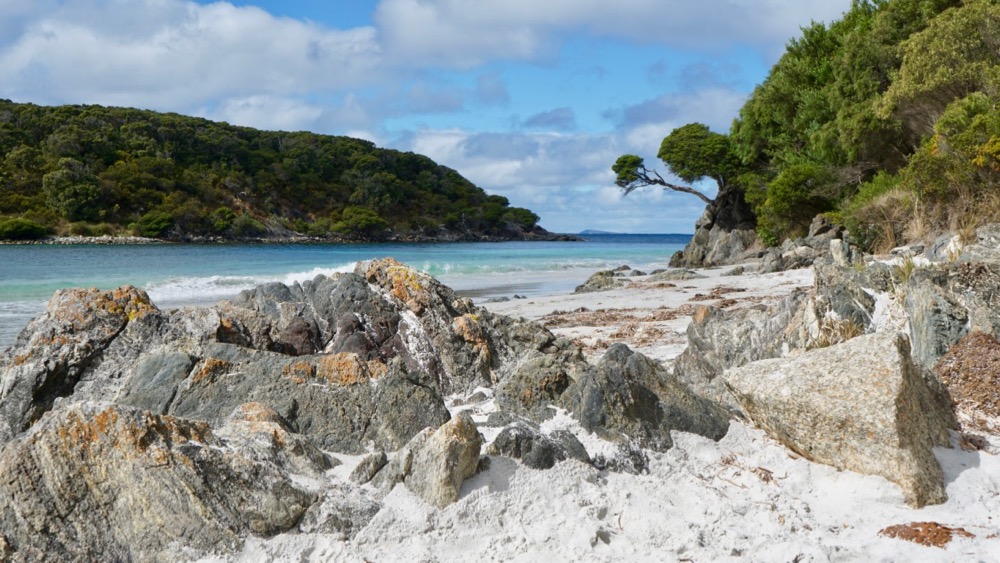
the beaches are still fantastic around here, with colourful granite boulders, like elephant rocks below, just west of denmark.
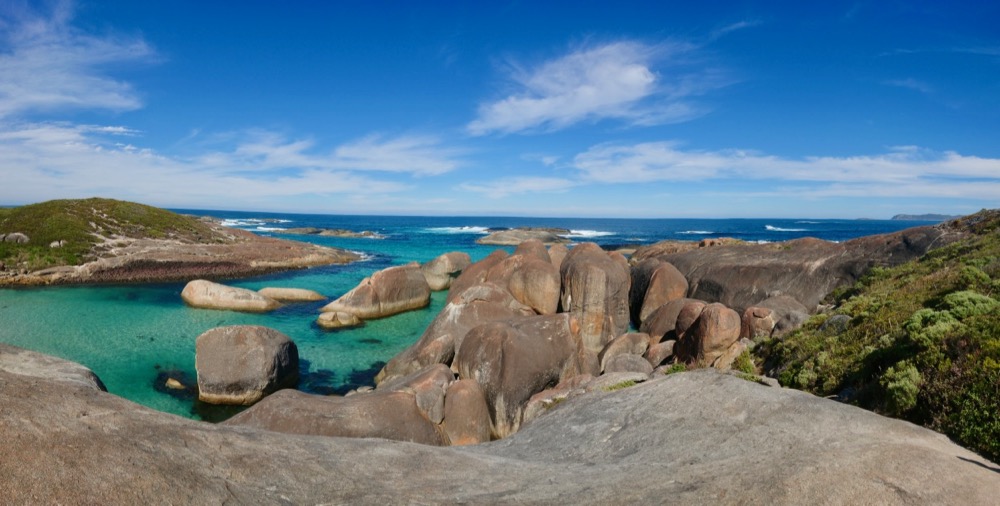
a few kilometers down the road everything changes. suddenly there are massive trees, the forests become dense and seem to go on forever. the climate is cooler, with more rain – which is the main reason why these giants can survive here, and pretty much only here.
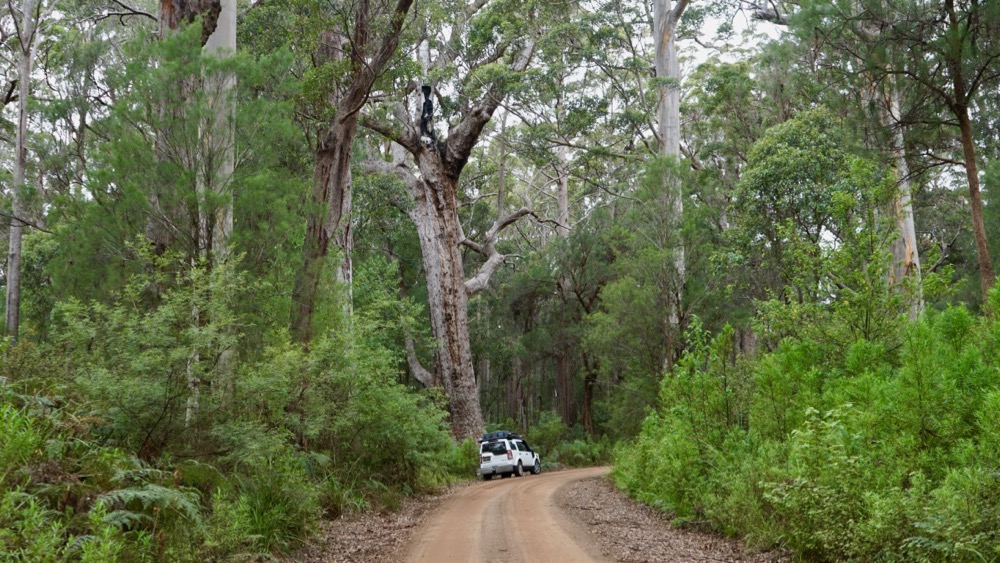
ever heard of tingle trees? don’t be fooled by the cute name, these guys are huge. they are among the tallest trees in the world; they can grow to more than 70 meters high and can have a circumference at the bottom of almost 30 meters.
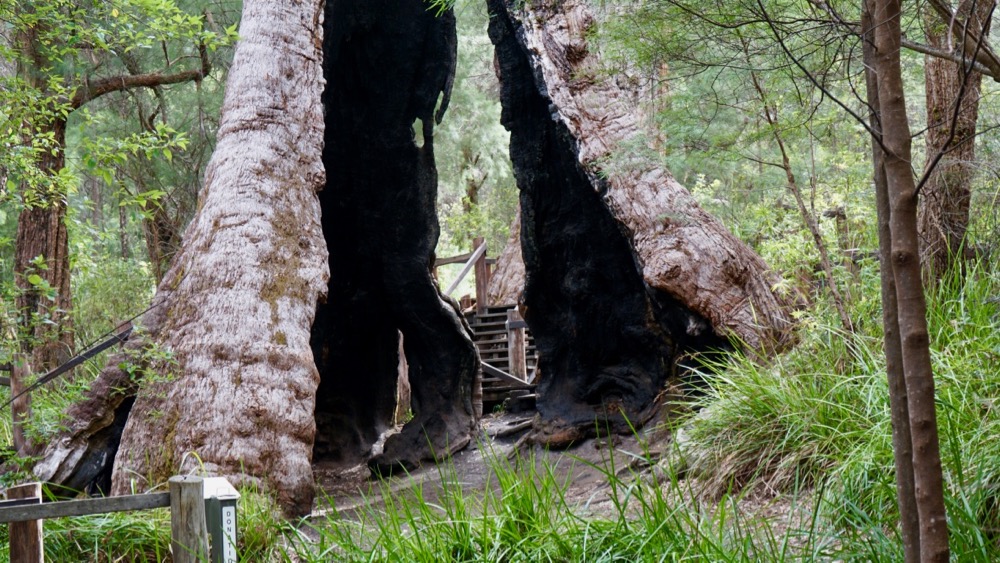
that takes time: this particular tree in the photo above is about 400 years old. Trees often get attacked by insects or fungi as they grow, this weakens parts of the tree and makes them more susceptible to fire. the result is a often a hollow, maybe not always as big as this one. btw, the tree is alive and doing well.
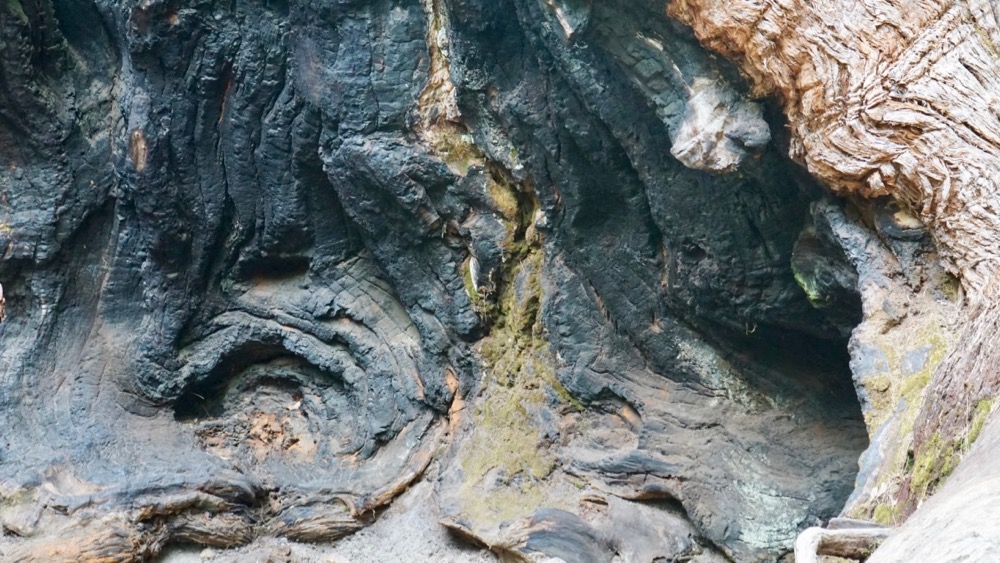
tingles used to be more widely distributed in the south west of w.a. but climate change (not the recent, man made kind, but over a few million years) has pushed them back. now they only grow in a small area near walpole. the main reason appears to be that they need quite a bit of water, more than 1000 mm per year, to grow.
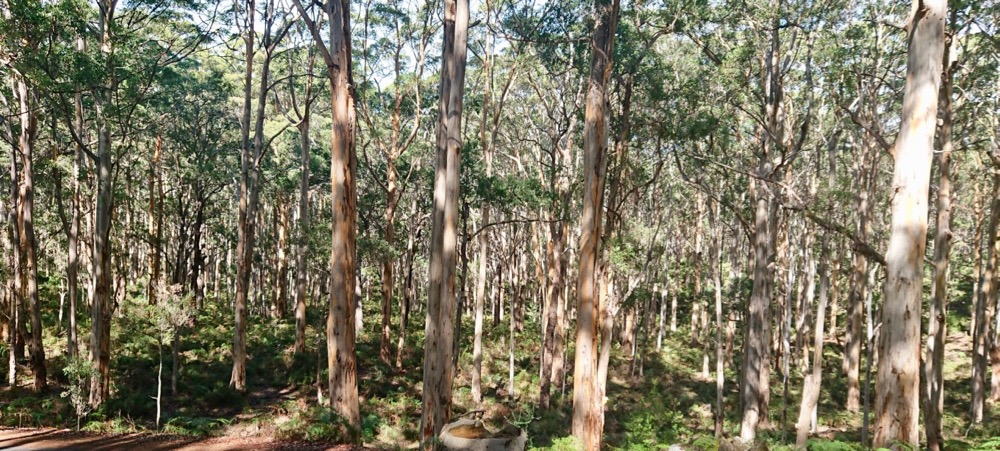
can’t see the trees from the wood? perfect camo!
the tingles often grow together with karri and jarrah trees, both also tall but not as wide and straighter than the tingles. they have a beautiful dark hard wood that is resistant to water. unsurprisingly people found a great way to utilize that feature: they cut jarrah to blocks and shipped them to england – the mother country – where the blocks were covered with asphalt to build roads. undoubtedly the black tar was considered a better sight than red hardwood. if you’ve see or better still read the hitch hikers guide to the galaxy: the vogons and the diamond encrusted crabs spring to mind.
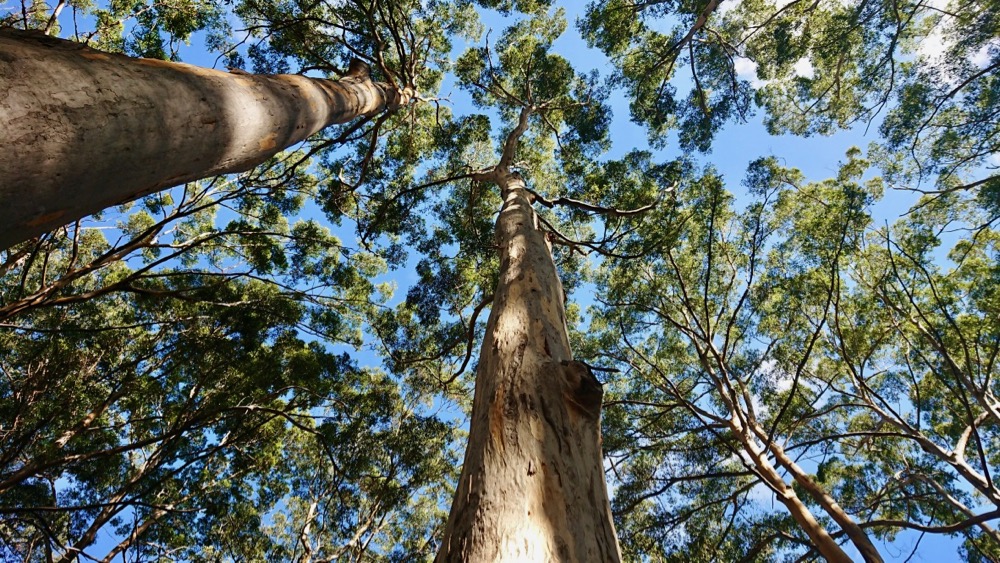
we stayed at a relatively new camp ground called jarrahdene, which used to be the site of an old timber mill. no electricity, no water, no showers … but toilets!
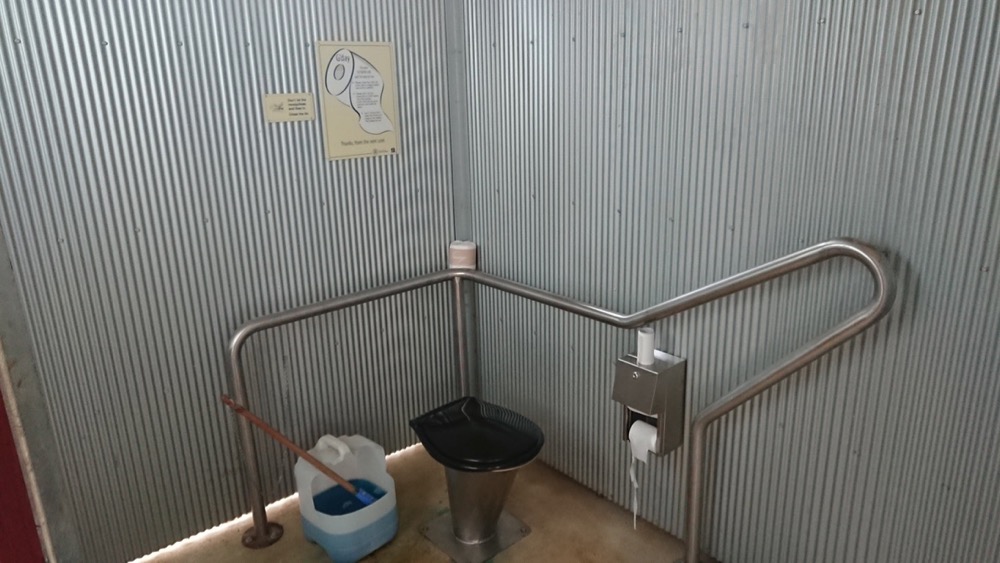
yes, that’s a long drop. it’s surprising how clean and non-smelly these toilets were. i think we would have enjoyed our stay even more had the weather not turned cold & wet. it’s autumn, but still … camping is not fun in the rain, no matter how high-tech the van.
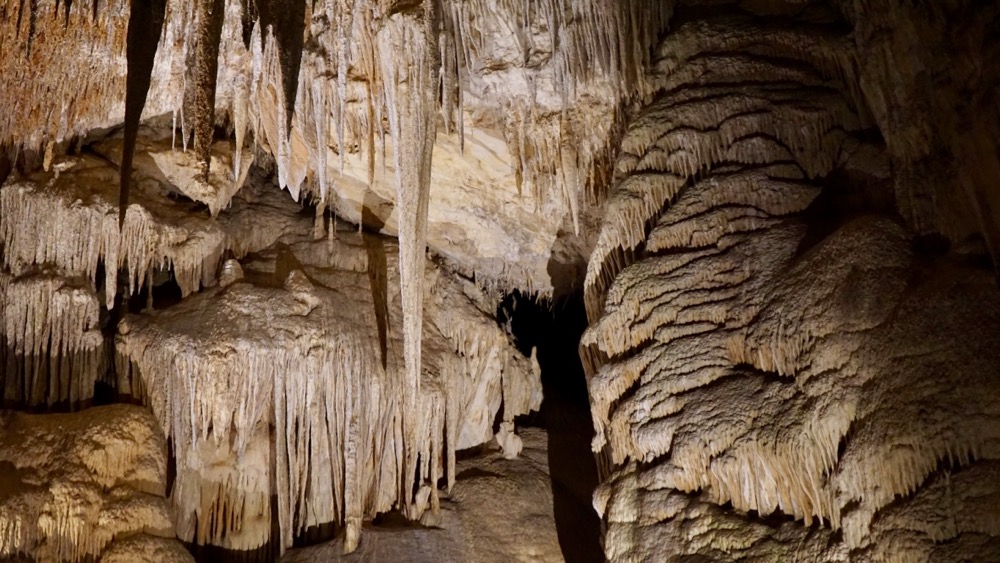
jarrahdene is located on caves road, which connects four or five (i lost count) caves just west of margaret river. kris & nat went to see the mammoth cave, which also contains fossils belonging to the australian megafauna.
megafauna animals included a marsupial lion, huge kangaroos, massive wombats almost the size of cows and an emu that was at least twice the size of today’s birds. it is thought that they were not hunted into extinction but failed to adapt to australia becoming a much dryer place about 50.000 years ago.
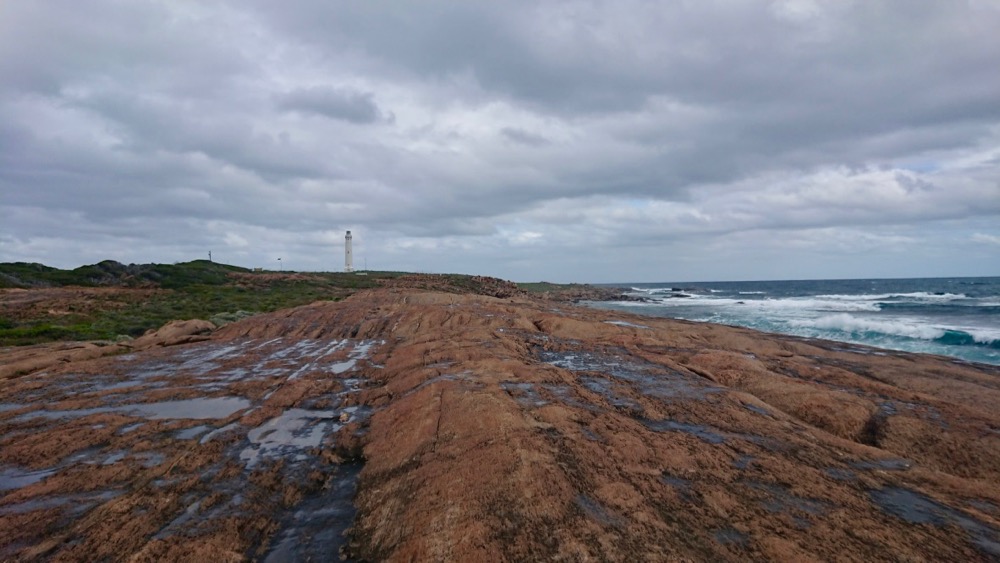
to the south is augusta, the souther tip of w.a., where the southern ocean and the indian ocean meet. i would like to be able to be more dramatic about this momentous location but the two oceans looked pretty much the same to me. must be because i was born in a land-locked country.
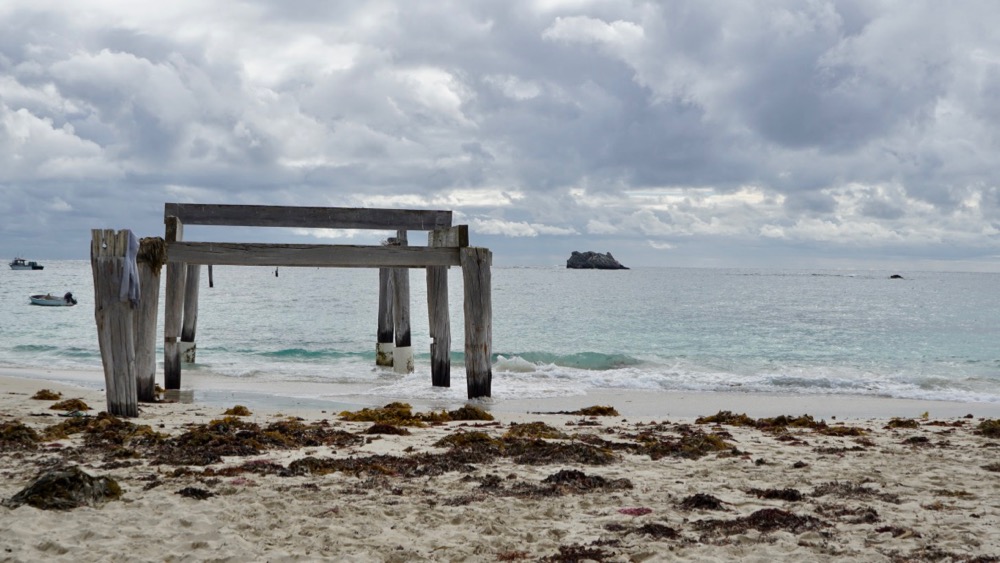
hamelin bay, just south of margaret river. this is the spot where a few weeks ago 150 pilot whales beached themselves; unfortunately only a few could be rescued. interestingly that was linked to the cancellation of the margaret river pro surfing event this week; there had been a few shark attacks on the coast in recent weeks and a spokesperson for the organisers thought that the whale carcasses may have attracted more sharks.
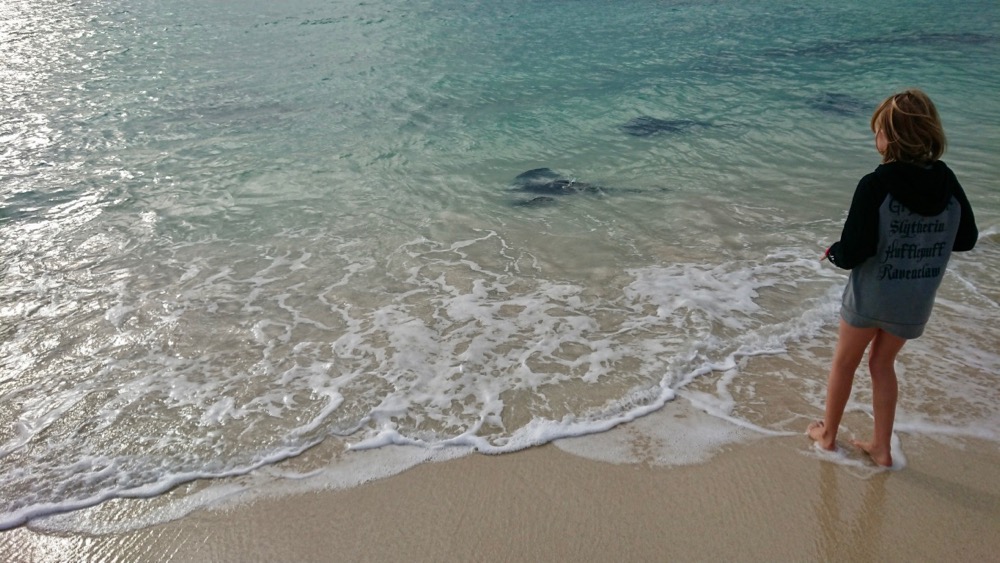
‘more’ being the operative word: the coast of w.a. is well known for having one of the highest concentrations of great white sharks. the guys in the photo above are of course the more elegant relatives of those sharks. the eagle rays in hamelin bay are protected and very peaceful. they appear to enjoy a pat by tourists – often in exchange for a tasty fish.
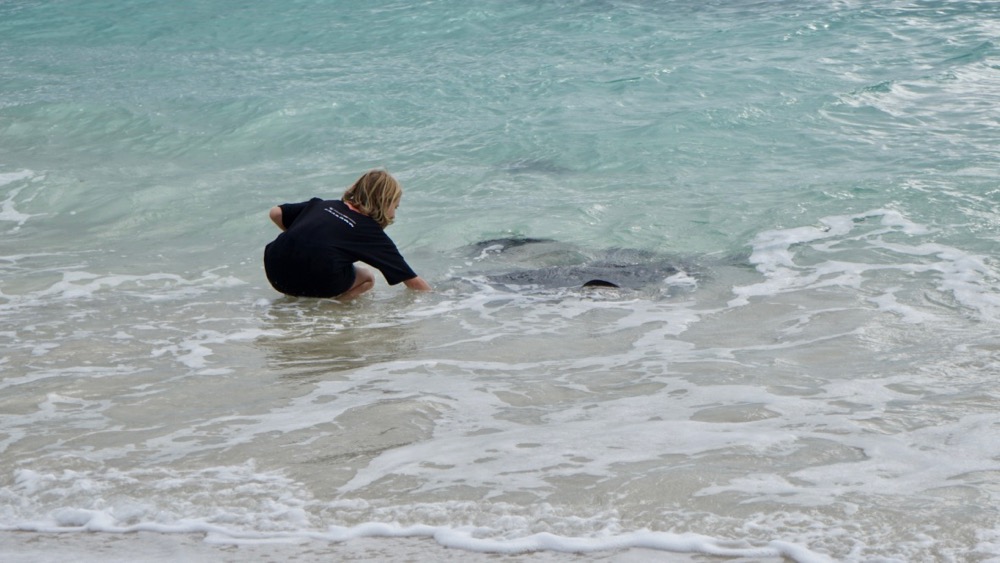
i know, one should not feed and even less touch wild animals (definitely not ones with venomous barbs on their tails) but these guys were pretty cool.
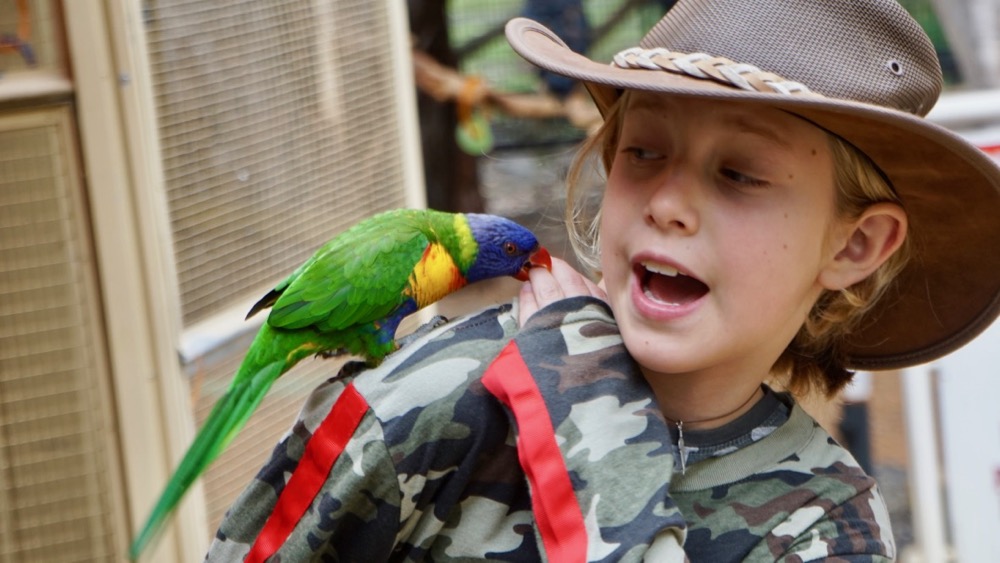
the same could not be said for this killer lorikeet. ouch!
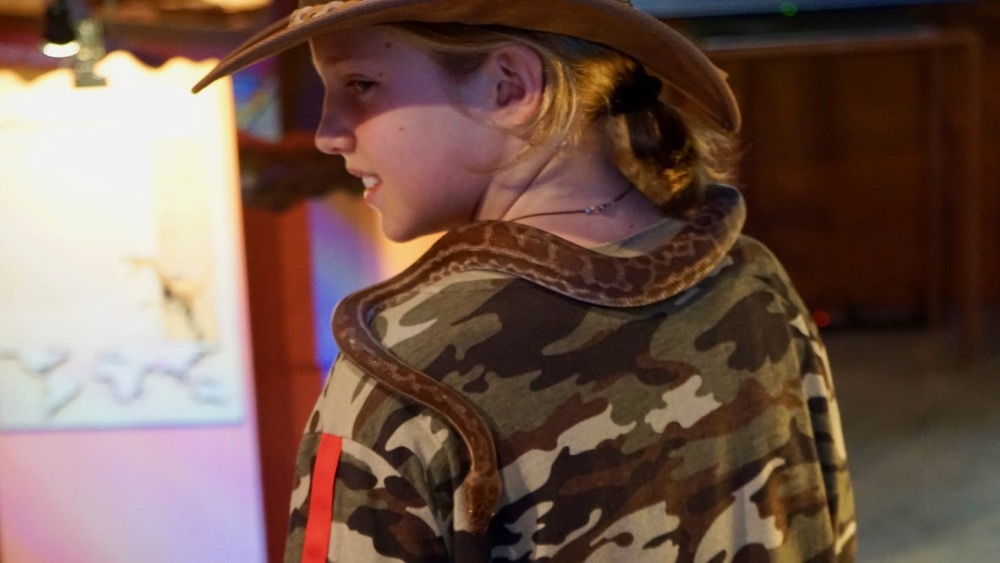
the little stimson’s python clearly feels right at home on all the camo gear.
one final image from hamelin bay. autumn.
i wonder if we brought enough cold weather gear.

ok, i’ve added a video. it’s a bit of a mash-up covering denmark (coast & beach), walpole (tingle trees), augusta (lighthouse) and hamelin bay (eagle rays). enjoy!